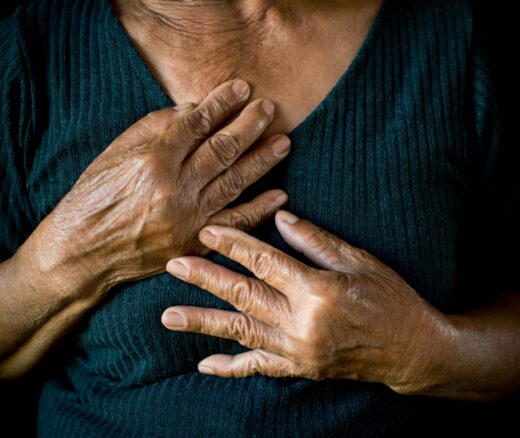
New APHA Book Warns Social Systems Are Driving Deepening Health Inequities
Penn LDI’s Antonia Villarruel and 10 Other Authors Map Social Determinants Across Multiple Racial and Ethnic Groups
Blog Post

Cash transfer programs, which provide a predictable amount of money to impoverished people, are a growing tool to reduce the negative effects of poverty, such as poor health outcomes. The United States is experiencing a boomlet in small-scale, experimental versions of these projects. About 40 time-limited pilot studies are operating now, mostly in cities. Philadelphia alone is home to six.
The pilot studies build upon the experiences of population-wide, guaranteed income projects in low- and middle-income countries, which have been shown to substantially improve the health of their population. Recognition of these “impressive” results abroad may have contributed to the new interest in guaranteed income programs in the U.S., according to LDI Associate Fellow Aaron Richterman, an Instructor of Medicine in the Division of Infectious Diseases at the Hospital of the University of Pennsylvania.
Strong evidence continues to mount that reducing poverty has a substantial impact on beneficiaries’ state of well-being—and even life expectancy. This summer, a major study in Nature by Richterman and LDI Senior Fellow Harsha Thirumurthy, a Professor of Medical Ethics and Health Policy at the Perelman School of Medicine, along with colleagues, reported that cash transfers given to poor people in 37 low- and middle-income countries reaped huge mortality benefits, including a 20% reduction in risk of death among adult women.
In addition, some research has shown that cash transfers can have a spillover effect—they benefit not just the direct recipients but also others in their community. Cash transfer programs may be one way to slow down what Richterman called “the greatest decline in U.S. life expectancy in 100 years,” a drop disproportionately experienced by non-white Americans.
Despite their benefits, guaranteed income programs are not popular in the U.S. “The notion of providing an income floor forces people to reckon with the fact that it’s not true that all you have to do is work hard to make it in this country. There are people that work two to three jobs and can’t pay rent,” Michael Tubbs, former mayor of Stockton, California, told the Washington Post. The small city tested a guaranteed income program for two years with promising results.
Furthermore, “many Americans have a negative attitude toward providing cash benefits,” said LDI Senior Fellow Meredith Doherty, an Assistant Professor of Social Work and Nonprofit Leadership at Penn’s School of Social Policy and Practice.
No one believes that a big boost in the American social safety net is likely to happen soon. But in the meantime, small projects continue to roll out in the U.S. “We’re talking about building evidence for large-scale programs,” said LDI Associate Fellow Aditi Vasan, an Instructor in Pediatrics at Perelman and a researcher at Children’s Hospital of Philadelphia’s (CHOP) PolicyLab.
In the last two decades, over 100 low- and middle-income countries have introduced some form of large-scale, government-run cash transfer programs as part of their poverty-reduction strategies—numbers that rose dramatically during the COVID-19 pandemic years. In low- and middle-income countries, cash transfer programs are often the only safety net program.
The programs can either be conditional (you must perform certain behaviors, such as getting your children vaccinated) or unconditional (no strings attached once you meet eligibility requirements). Conditional programs are more common in Latin America and unconditional programs are more common in Africa.
Pilot projects in the U.S. have generally been unconditional. “With unconditional programs, the assumption is that people themselves understand what they need to spend money on, that they’re living in that experience,” Richterman explained. “In the Nature study, both conditional and unconditional programs led to significant reductions in mortality.”
Research suggests that guaranteed income programs lead to better nutrition, more health-promoting behaviors like getting vaccines, improved access to care, safer pregnancies, and lower depression and anxiety. “These programs have had fantastic effects,” said Doherty.

As further proof of the validity of its results, the Nature study about mortality showed a dose-response effect. “Cash programs that covered more people and had bigger benefits were more effective,” said Richterman. Results were also cumulative. “The drop in mortality increased over time. It’s smaller early on and becomes greater in years seven to eight,” the LDI Associate Fellow noted.
In the Nature study, consistent with other research on guaranteed income programs, women benefited more strongly than men. “Cash transfers seem to disproportionately improve women’s empowerment and change the decision-making dynamics within the household in a favorable way,” said Richterman, who added that with better health care, maternal mortality declines.

On the other hand, it appears that withdrawal of benefits may lead to a deterioration in factors that influence health. When U.S. states dropped COVID-related emergency increases in Supplemental Nutrition Assistance Program (SNAP, formerly known as food stamps) allotments in 2022 and 2023, SNAP beneficiaries experienced about a 21% relative increase in food insufficiency and child food insufficiency, according to a new study in JAMA Health Forum by Richterman, Thirumurthy, and LDI Senior Fellow Christina A. Roberto, an Associate Professor of Medical Ethics and Health Policy at Perelman. “Food insufficiency” means that people sometimes, or often, did not have enough food to eat in the last seven days, and it has consequences for individuals’ health. “People who are struggling with food insufficiency may be less likely to take their medications, pay attention to symptoms that could be important, and attend their doctor’s appointments,” Richterman said.
Some research indicates that cash transfer programs provide health benefits both to direct recipients as well as to members of the beneficiaries’ communities. The Nature study of low- and middle-income countries looked at everybody in a nation’s population, not just those who received benefits. Richterman pointed out, “In these countries, about 20% or more of people who live in poverty tend to receive cash benefits. With a reach like this, the programs affect not just the person who received benefits, but their households and possibly other community members. There’s a literal spillover of the funds.” Also, cash transfers can improve the local economy.

In addition, the ability to afford medical care can help reduce the spread of infectious diseases such as HIV. Research on spillover effects has also taken place in the U.S. “I published a study in 2021 that showed reductions in new HIV diagnoses at the population level (i.e., including beneficiaries and non-beneficiaries) when SNAP income limits were increased by states. Other studies have used the staggered roll out of SNAP (then called food stamps) in the 1960s and ’70s as a natural experiment and showed a number of benefits decades later during adulthood for children (including both beneficiaries and non-beneficiaries) who were in counties where the program had been introduced,” said Richterman.
Concluded Thirumurthy: “If you want to improve a region’s health, guaranteed income programs may be a really good investment.”
Considerably less controversial than national programs, and often under the radar, pilot cash transfer studies have popped up around the country ever since the first unconditional project launched in Stockton, California, a majority-minority city, in 2019. Since then, small-scale programs have appeared in Gary, Indiana; Jackson, Mississippi; San Francisco; New York City; Saint Paul; Atlanta; and elsewhere. In Philadelphia, in collaboration with Stacia West and Amy Castro, co-founding directors of Penn’s Center for Guaranteed Income Research (CGIR), Doherty is the lead investigator on a study that’s providing $1,000 per month for one year to 100 Medicaid beneficiaries with advanced cancer who are being treated at two comprehensive cancer centers in Philadelphia.

“In most of the pilot studies across the United States, findings are pending,” Doherty said. An exception is a 2023 report on the Stockton project, which provided $500 per month for two years to low-income households. Led by West and Castro, the study found that cash recipients reported lower mental distress and better energy and physical functioning.
These pilot studies, according to Thirumurthy, are not going to have major impacts on their geographic areas. “But they have the potential to demonstrate the very far-reaching effects of alleviating poverty among these beneficiaries,” he said.

It is unlikely that a large-scale cash transfer program will happen soon in the U.S. “There’s a fear that cash transfer programs might be used to support health-harming behaviors such as alcohol or illicit drug use, or that they may disincentive people from working,” said Vasan.
Still, said Doherty, “there is solid evidence that cash transfers can reduce some risky behaviors and increase healthy ones, and some studies even have observed small increases in labor market engagement.”
Money is also a serious concern. Almost all the pilot programs in the country have been funded by philanthropic entities rather than the government. Most governments can’t afford these disbursements. “Paying all Philadelphians in poverty, about 23% of the population, $10,000 per year in guaranteed income would cost about $3.5 billion, or more than half of the city’s budget,” estimated the Philadelphia Inquirer.
In the meantime, LDI experts are calling for more limited reforms:
1. Expand U.S. safety net programs such as SNAP, the Child Tax Credit, and Supplemental Security Income (SSI). SNAP made the largest-ever increases during the COVID-19 pandemic, but those were rolled back in March 2023, causing a resurgence in long lines at food pantries.
“Higher benefit amounts in programs like SNAP are likely to have major impacts,” said Thirumurthy.
2. Increase participation in programs that already exist.
According to the U.S. Census Bureau, about 1 in 6 Americans eligible for SNAP do not participate. “Reducing any of the barriers to enrolling or re-enrolling in SNAP would be a change that would go a long way in terms of improving health,” Thirumurthy said.
Patients who are ill, particularly those with cancer, often have trouble accessing SSI benefits. “We need to make the pathway to SSI simpler. It’s a really arduous process to get benefits, and sometimes you need to get a lawyer. Participants have described the process as being low on respect,” said Doherty, who has studied barriers that prevent patients with cancer from using financial assistance programs.
3. Push for changes at non-federal levels.
In the U.S., the main activity regarding cash transfer programs is coming from municipal, county, and state entities. In June 2020, former Stockton Mayor Michael Tubbs founded Mayors for a Guaranteed Income. The group, which is affiliated with Penn’s CGIR, acts to promote these types of programs.
Thirumurthy believes that the success of local cash transfer programs can have an impact. “When you see 10 to 20 municipalities introducing cash transfer pilots, this can build momentum over time. Their experiences can contribute to the public discourse about the programs and ultimately increase interest in doing these on a large scale,” he said.


Penn LDI’s Antonia Villarruel and 10 Other Authors Map Social Determinants Across Multiple Racial and Ethnic Groups

A New Study of a Sample of Facilities Found Half Without Any Behavioral Health Staff

Physicians Were Paid About 10% Less for Visits Involving Black and Hispanic Patients, With Pediatric Gaps Reaching 15%, According to a First-of-Its-Kind LDI Analysis

New Study From LDI and MD Anderson Finds That Black and Low-Income, Dually Eligible Medicare Patients Are Among the Most Neglected in Cancer Care

Equitably Improving Care for Hospitalized Kids Who Experience Cardiac Arrest Requires Hospital-Level Changes, LDI Fellows Say

Billing Codes That Flag Food, Job, or Housing Insecurity in Medical Records are Underused for the Sickest Medicare Patients